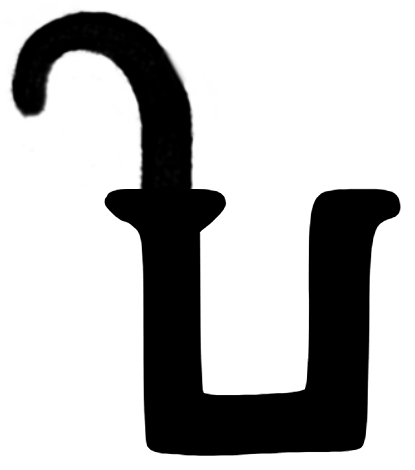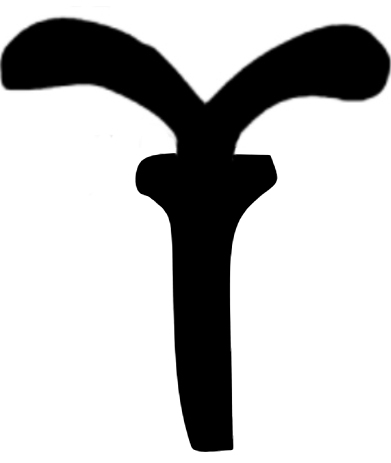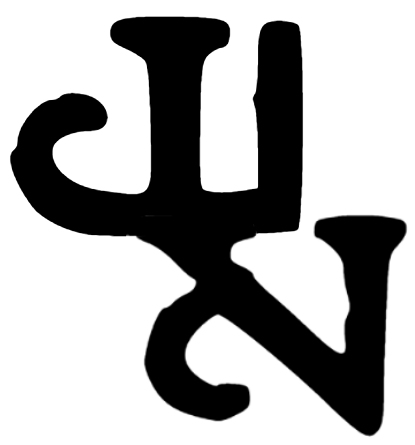Peroz (Kidarite) on:
[Wikipedia]
[Google]
[Amazon]
Peroz (

 ''Pi-ro-ysa'' "The victorious", ruled circa 350-360 CE), was according to modern scholarship an early
''Pi-ro-ysa'' "The victorious", ruled circa 350-360 CE), was according to modern scholarship an early
p.284 ff
/ref> Peroz was a successor of the first Kidarite ruler
p.209 sq
/ref>
 This ruler is traditionally held to be
This ruler is traditionally held to be
File:Peroz III Kushanshah in profile.jpg, Coin of Peroz in the name of Varahran I. ''Obverse: Crowned bust with Sasanian headgear and ram horns; Brahmi  “Pi” to right/ ''Reverse:'' Fire altar with attendants and ribbons; Brahmi “Nam” in exergue.
File:HUNNIC TRIBES, Kidarites. Peroz. Circa 395-425 CE.jpg, Coin of Peroz.
“Pi” to right/ ''Reverse:'' Fire altar with attendants and ribbons; Brahmi “Nam” in exergue.
File:HUNNIC TRIBES, Kidarites. Peroz. Circa 395-425 CE.jpg, Coin of Peroz. 
 ''Pi-ro''./ ''Reverse:'' Fire altar flanked by two attendants.Another similar coin with readin
''Pi-ro''./ ''Reverse:'' Fire altar flanked by two attendants.Another similar coin with readin
/ref> File:Kushano-Sasanian Vahrām (Bahram) I struck under Kidarite ruler Peroz Circa AD 330 365 CE.jpg, Coin in the name of the to right.
to right.
Middle Persian
Middle Persian or Pahlavi, also known by its endonym Pārsīk or Pārsīg () in its later form, is a Western Middle Iranian language which became the literary language of the Sasanian Empire. For some time after the Sasanian collapse, Middle Per ...
: , Gupta script
The Gupta script (sometimes referred to as Gupta Brahmi script or Late Brahmi script)Sharma, Ram. '' 'Brahmi Script' ''. Delhi: BR Publishing Corp, 2002 was used for writing Sanskrit and is associated with the Gupta Empire of the Indian subcon ...
: 

 ''Pi-ro-ysa'' "The victorious", ruled circa 350-360 CE), was according to modern scholarship an early
''Pi-ro-ysa'' "The victorious", ruled circa 350-360 CE), was according to modern scholarship an early Kidarite
The Kidarites, or Kidara Huns, were a dynasty that ruled Bactria and adjoining parts of Central Asia and South Asia in the 4th and 5th centuries. The Kidarites belonged to a complex of peoples known collectively in India as the Huna, and in Eur ...
ruler in Gandhara
Gandhāra is the name of an ancient region located in the northwestern region of the Indian subcontinent, more precisely in present-day north-west Pakistan and parts of south-east Afghanistan. The region centered around the Peshawar Vall ...
, right after the end of Kushano-Sasanians
Kushano-Sasanian Kingdom (also called Kushanshahs, KΟÞANΟ ÞAΟ ''or Koshano Shao'' in Bactrian, or Indo-Sasanians) is a historiographic term used by modern scholars to refer to a branch of the Sasanian Persians who established their rule in ...
.
Rule
The rule of the Kushano-Sasanians ended in the mid-4th century CE, when they lost their territories to the invadingKidarites
The Kidarites, or Kidara Huns, were a dynasty that ruled Bactria and adjoining parts of Central Asia and South Asia in the 4th and 5th centuries. The Kidarites belonged to a complex of peoples known collectively in India as the Huna, and in Euro ...
Huns.The Cambridge Companion to the Age of Attila, Michael Maas, Cambridge University Press, 201p.284 ff
/ref> Peroz was a successor of the first Kidarite ruler
Kirada
Kirada (Brahmi: ''Ki-ra-da'', ruled 335-345 CE), is considered by modern scholarship as the first known ruler of the Kidarite Huns in the area of Gandhara in northwestern India, possibly at the same time as another Kidarite ruler named Yosada.
...
, and the immediate predecessor of the famous Kidarite ruler Kidara
Kidara I (Late Brahmi script: ''Ki-da-ra'') fl. 350-390 CE) was the first major ruler of the Kidarite Kingdom, which replaced the Indo-Sasanians in northwestern India, in the areas of Kushanshahr, Gandhara, Kashmir and Punjab.
Reign
Kidara hims ...
. He was previously thought to be one of the last of the Kushano-Sasanids
Kushano-Sasanian Kingdom (also called Kushanshahs, KΟÞANΟ ÞAΟ ''or Koshano Shao'' in Bactrian, or Indo-Sasanians) is a historiographic term used by modern scholars to refer to a branch of the Sasanian Persians who established their rule in ...
Kushanshas
Kushanshah (Bactrian language, Bactrian: KΟÞANΟ ÞAΟ, ''Koshano Shao'', Middle Persian, Pahlavi: Kwšan MLK ''Kushan Malik'') was the title of the rulers of the Kushano-Sasanian Kingdom, the parts of the former Kushan Empire in the areas of S ...
rulers.
He minted his own coinage and used the title of Kushansha
Kushanshah ( Bactrian: KΟÞANΟ ÞAΟ, ''Koshano Shao'', Pahlavi: Kwšan MLK ''Kushan Malik'') was the title of the rulers of the Kushano-Sasanian Kingdom, the parts of the former Kushan Empire in the areas of Sogdiana, Bactria and Gandhara, na ...
, ie "Kings of the Kushans".The Cambridge History of Iran, Volume 3, E. Yarshatep.209 sq
/ref>
Siege of Amida (359 CE)
HistorianKhodadad Rezakhani
Khodadad Rezakhani (Persian language, Persian: خداداد رضاخانی, born 1976) is an Iranian historian of Late antiquity, late antique Central Asia, Central and West Asia. He has been associate research scholar at The Sharmin and Bijan Mo ...
suggests that Peroz was at the Siege of Amida in 359 CE, where a Kidarite army under Grumbates
Grumbates or Krumbates was a king of the Chionitae, probably of the Kidarites tribe, an ancient nomadic tribe of Transoxiana.
Etymology
The exact origin of his name is not fully known. Hyun Jin Kim etymologized his name as ''*Qurum-pat'', "rul ...
is known to have supported the Sasanian army of Shapur II
Shapur II ( pal, 𐭱𐭧𐭯𐭥𐭧𐭥𐭩 ; New Persian: , ''Šāpur'', 309 – 379), also known as Shapur the Great, was the tenth Sasanian King of Kings (Shahanshah) of Iran. The longest-reigning monarch in Iranian history, he reigned fo ...
in besieging the city held by the Romans. In his account of the siege, Ammianus Marcellinus
Ammianus Marcellinus (occasionally Anglicisation, anglicised as Ammian) (born , died 400) was a Roman soldier and historian who wrote the penultimate major historical account surviving from Ancient history, antiquity (preceding Procopius). His w ...
describes in detail the costume, and in particular the headgear of one of the besieging rulers:
 This ruler is traditionally held to be
This ruler is traditionally held to be Shapur II
Shapur II ( pal, 𐭱𐭧𐭯𐭥𐭧𐭥𐭩 ; New Persian: , ''Šāpur'', 309 – 379), also known as Shapur the Great, was the tenth Sasanian King of Kings (Shahanshah) of Iran. The longest-reigning monarch in Iranian history, he reigned fo ...
, although Ammanus Marcellinus doesn't expressly say so, and Shapur's traditional headgear, a crenellated crown, is very different. The headgear with ram's horn would rather correspond to that of Peroz as seen on many of his coins in the Sasanian style. Ammianus Marcellinus also mentions that the king, whom he assumes to be Shapur, was called "Saansaan" and "Pirosen" by the Persians, which could actually refer to "Šāhanšāh Pērōz", the ruler of the eastern Hunnic tribes (Chionites
Xionites, Chionites, or Chionitae (Middle Persian: ''Xiyōn'' or ''Hiyōn''; Avestan: ''Xiiaona''; Sogdian ''xwn''; Pahlavi ''Xyon'') were a nomadic people in the Central Asian regions of Transoxiana and Bactria.
The Xionites appear to be syno ...
, Gelani, and Sagistani).
Coinage in the style of the Kushano-Sasanians
Besides his coins in the Kushan style, Peroz issues silver and gold coinage in the Sasanian style, in which he often retains the name of Kushano-Sasanian ruler Varahran I, but in which Varahran is shown wearing a characteristic Sasanian headgear with the addition of two ram horns. “Pi” to right/ ''Reverse:'' Fire altar with attendants and ribbons; Brahmi “Nam” in exergue.
File:HUNNIC TRIBES, Kidarites. Peroz. Circa 395-425 CE.jpg, Coin of Peroz.
“Pi” to right/ ''Reverse:'' Fire altar with attendants and ribbons; Brahmi “Nam” in exergue.
File:HUNNIC TRIBES, Kidarites. Peroz. Circa 395-425 CE.jpg, Coin of Peroz. Gandhara
Gandhāra is the name of an ancient region located in the northwestern region of the Indian subcontinent, more precisely in present-day north-west Pakistan and parts of south-east Afghanistan. The region centered around the Peshawar Vall ...
mint. ''Obverse:'' Bust facing, wearing crown with ram’s horns surmounted by korymbos and ribbons. Brahmi legend 
 ''Pi-ro''./ ''Reverse:'' Fire altar flanked by two attendants.Another similar coin with readin
''Pi-ro''./ ''Reverse:'' Fire altar flanked by two attendants.Another similar coin with readin/ref> File:Kushano-Sasanian Vahrām (Bahram) I struck under Kidarite ruler Peroz Circa AD 330 365 CE.jpg, Coin in the name of the
Kushano-Sasanian
Kushano-Sasanian Kingdom (also called Kushanshahs, KΟÞANΟ ÞAΟ ''or Koshano Shao'' in Bactrian, or Indo-Sasanians) is a historiographic term used by modern scholars to refer to a branch of the Sasanian Persians who established their rule in ...
ruler Varahran I, struck under Peroz (ram horns added), circa AD 330 365 CE. Kidarite
The Kidarites, or Kidara Huns, were a dynasty that ruled Bactria and adjoining parts of Central Asia and South Asia in the 4th and 5th centuries. The Kidarites belonged to a complex of peoples known collectively in India as the Huna, and in Eur ...
tamgha
A tamga or tamgha (from otk, 𐱃𐰢𐰍𐰀, tamga, lit=stamp, seal; tr, damga; mn, tamga; ; ); an abstract Seal (emblem), seal or Seal (emblem), stamp used by Eurasian nomads and by cultures influenced by them. The tamga was normally the e ...
 to right.
to right. Balkh
), named for its green-tiled ''Gonbad'' ( prs, گُنبَد, dome), in July 2001
, pushpin_map=Afghanistan#Bactria#West Asia
, pushpin_relief=yes
, pushpin_label_position=bottom
, pushpin_mapsize=300
, pushpin_map_caption=Location in Afghanistan ...
mint.
References
Sources
* * * * * * {{s-end 3rd-century monarchs in Asia 3rd-century Iranian people